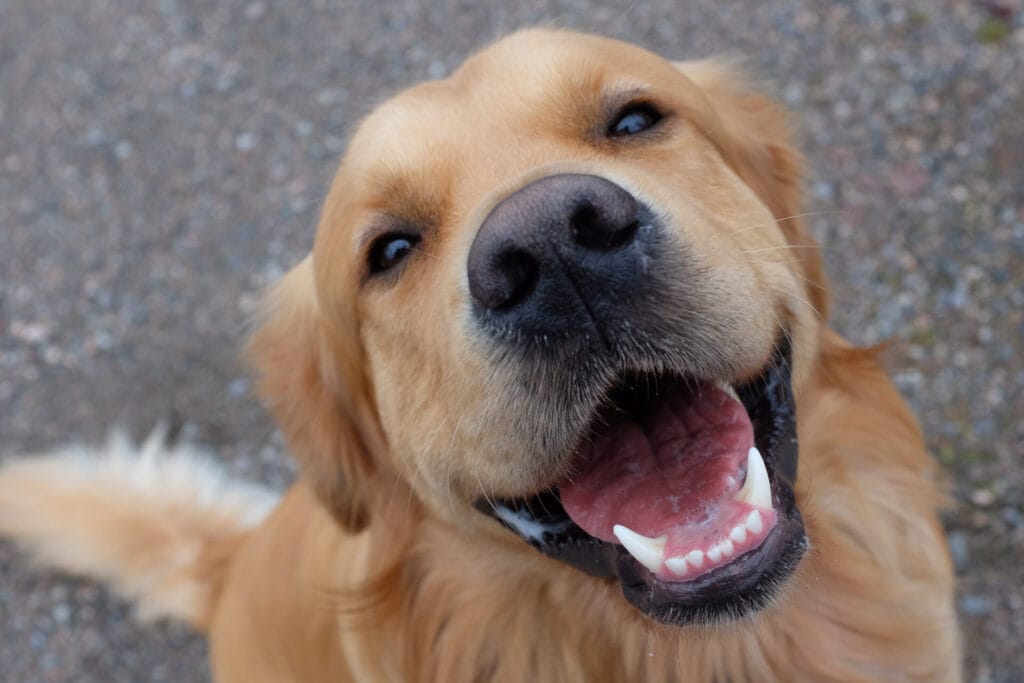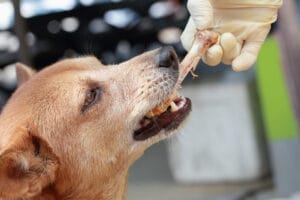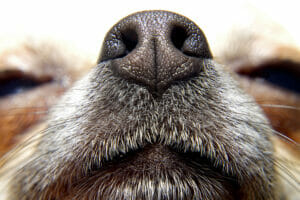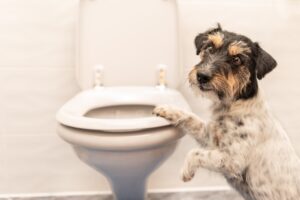Keeping dogs healthy should be a daily ritual for pet owners all year, especially regarding oral hygiene. Because pups cannot brush their teeth, they may need extra special attention. Dental problems in dogs need to be taken seriously.
Dogs can get many of the same or similar oral diseases seen in people. However, whereas the most common dental disease in people is tooth decay or cavities, it is periodontal disease in dogs.
Dental checks are as important to animals as they are to us, and looking after their health significantly prevents oral problems they may have in the future. If left untreated, red gums, stinky breath, or yellow teeth could lead to oral disease, giving your pet a poor quality of life, and nobody wants that!
Brushing your dog’s teeth may not be top of your to-do list. Still, according to the American Veterinary Dental Society (and the American Veterinary Medical Association), 80 to 85 percent of all pets have periodontal disease. That number jumps to 100 percent in pets over 4 years of age. In fact, it is the number one health problem diagnosed in most dogs.
Warning Signs of Poor Dog Dental Care
Proper dental care is important to the overall health of your canine because it affects the heart, lungs, and kidneys, so it is important to provide your pet with proper daily dental care before there is a problem. You can help your dog stay healthy by caring for their teeth and learning to spot these common warning signs.
Bad Breath
We know that pets don’t always have the best reputations for fresh breath, but if the odor isn’t directly related to something they ate, it can sometimes indicate that bacteria and plaque have built up in their mouths. A dog’s breath can be very telling. Bad breath can mean advanced periodontal disease. This puts their teeth at risk of decay.
If a dog’s breath smells foul (like rotten eggs), this could be early signs that they have a disease that needs treatment from their vet. Remember, there’s more at stake than just smelly breath for a dog. Untreated, periodontal disease can damage your dog’s teeth and jaws over time and is one of the major causes of tooth loss. Infections caused by this type of disease have been linked with heart, liver, and kidney diseases, so you should talk to your vet if you notice any unusual odors.
Yellow or Discolored Teeth
If you notice yellow or brown stains on your dog’s teeth, especially around the gum line, there is a good chance it could be dental plaque. Brushing their teeth with special toothpaste and feeding them dental treats can help prevent plaque and tartar buildup.
Existing plaque and tartar need to be carefully removed by a vet to reduce the risk of your dog getting tooth decay. Talk to your veterinarian about options and different dental cleaning methods to prevent plaque buildup and enforce healthy teeth. Dog dental chews and pet dental care can often help with this issue.
If you look inside your dog’s mouth and see a gray or brownish film covering the teeth, especially around the gumline, it’s time to schedule a cleaning.
Broken or Loose Teeth
Broken or loose teeth could result from an injury, but more often, these symptoms are caused by the tooth and gum decay associated with dental disease. Either way, your dog will be more comfortable if you schedule a check-up to remove broken teeth. They can also be dangerous if left untreated.
Changes in Eating Habits
Any sudden change in your pet’s appetite or chewing is a cause for concern, particularly when they don’t want to eat their regular food. Along with wider health concerns, symptoms of gum disease (like infections or swollen gums) might even cause a dog or cat to stop eating or chewing altogether. If you notice your dog chewing on one side or unable to grasp food in the mouth, she likely has dental disease or tooth decay.
Be sure to contact your vet immediately if your furry friend’s appetite has changed – especially if there have been no big changes to their diet.
Pain, Excessive Drooling, or Blood
Did you know dogs have a higher tolerance for pain than humans, so it may take a while to notice your dog is in distress? Pawing around the mouth, excess drooling and even blood are typical symptoms of canine dental disease.
Swollen and Bleeding Gums
Inflamed, red, swollen gums and bleeding gums can be signs that your pet has gum disease or another infection, which may cause toothaches or discomfort in their jaws. Mouth swelling in your canine companion can mean dental issues. Your vet can provide an accurate diagnosis, give more insight into the cause of the problem, and recommend a treatment, which may involve dental cleaning and scaling each tooth to remove plaque and bacteria from a dog’s mouth. Sometimes, animals must have a tooth (or a few) pulled.
Growths on the Gums
If you spot any unexplained lumps or growths anywhere on your pet, you should schedule an appointment with a vet. Growths on the gums can sometimes be malignant tumors that need removal, which could involve removing some teeth too.
If you check and clean your doggo’s teeth daily, you’ll be more likely to notice unusual growths at an early stage when they’re usually easier to treat.
Sudden Shyness
If your dog suddenly starts moving its head away from your hand or its behavior seems off when you examine the area, tooth pain may be causing it to act shyer or increasingly irritable. They may be afraid that it will increase their pain.
Taking Care of Your Dog’s Teeth Properly
Caring for the teeth and gums of dogs isn’t so different from looking after your own oral hygiene. You can look after a dog’s oral health by ensuring they eat a healthy diet, clean their teeth daily, and schedule regular appointments and checkups with your local vet. Many even swear by purchasing dog dental treats. But, like us, many animals are at a higher risk of dental problems as they age.
How to Treat and Prevent Dog’s Toothaches
- Take your dog into the vet’s office for regular oral exams and cleanings.
- Check their teeth daily.
- Brush your dog’s teeth daily with either a dog toothbrush or a finger brush.
- Invest in dog dental products.
- Feed your dog quality dog food.
- Offer safe toys, chew toys, and treats for daily chewing.
- Do your own oral examinations regularly.
Prevention is even better than a cure! Just as it is so important for humans to look after our teeth, our pets are no different. Regularly checking for these signs of dental disease and implementing a daily dental routine will quickly improve their oral health and overall happiness and well-being. A pet’s oral health is only improved with proper dental care and regular dental cleanings.




















